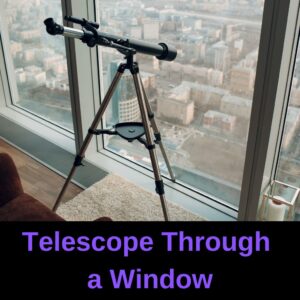This site contains affiliate links to products. I may receive a commission for purchases made through these links.
Ever looked up at the night sky and wished you could identify the constellations twinkling above? Well, I’ve got some good news for you. In this digital age, there’s an app for that. In fact, there are several!
Stargazing apps can turn your smartphone into a pocket-sized planetarium. They help beginners navigate the night sky with ease, offering a wealth of knowledge at your fingertips. Whether you’re trying to spot Orion’s Belt or track the International Space Station, these apps make it a breeze.
What Are Stargazing Apps?
Have you ever looked up at the night sky, seeing a twinkling canvas above and wondered what exactly you’re gazing at? That’s where stargazing apps jump in. Think of these tools as your personal pocket astronomers—an interactive guide to the wonders of the universe.
Stargazing apps work using your smartphone’s sensors and GPS to map out the night sky in real time. They overlay constellations, identify stars, and can even track celestial bodies like satellites. Some apps also incorporate augmented reality (AR) to blend digital information with the real world around you. You simply point your phone at the sky and the app displays a map of the stars, complete with detailed information about what you’re seeing.
Here’s how it works:
- You download the stargazing app onto your smartphone
- Open the app and point your phone to the sky
- The app will display the stars, constellations, and other celestial objects visible in that particular section of the sky
- Each celestial object’s name, history, and other fun facts will pop up as you navigate the app
They’re perfect for beginners who are just getting started with astronomy. These apps are intuitive, user-friendly, and accessible to all. They’re tools that not only make stargazing fun but also educational.
If you’re an avid camper, enjoy nighttime picnics, or you’re just simply fascinated by the cosmos—these apps are exactly what you need. With technology available at our fingertips, understanding the universe has never been easier.
Stargazing apps aren’t limited to night-time use. Many can also simulate the sky at different times—letting you explore what the stars will look like later in the evening or view celestial events from the past. They’re your gateway to the cosmos, making the infinite universe fit into the palm of your hand. My favorite part is the sheer amount of information these apps provide—helping make each stargazing session a journey of discovery.
Why Use Stargazing Apps?
Before we delve into the best apps for stargazing, you might be wondering, “Why use stargazing apps in the first place?” It’s a valid question. Stargazing is about exploring the unknown, and it can be overwhelming to know where to start. That’s where stargazing apps come into the picture. They can guide you, providing a stellar map right in your hands. With just a flick of your wrist, you’ll have a wealth of information available.
Modern technology has not left any area of our lives untouched, and stargazing is no exception. In the past, identifying constellations and celestial bodies required manual charts and a fair degree of knowledge. Now, with the advancement in tech, we’ve got apps that simplify the process. Using your smartphone’s built-in sensors, stargazing apps map the sky in real time, allowing you to identify stars, constellations, and even planets with ease.
Perhaps the most mesmerizing feature that many of these apps offer is Augmented Reality (AR). By simply pointing your smartphone at the sky, these apps create an extraordinary blend of digital and real worlds. They overlay a map of the stars onto the real night sky, which allows for an immersive, interactive, and educational experience.
Another notable advantage of having a stargazing app is its accessibility. Whether you’re an urban dweller dealing with light pollution or you’re out in the wilderness under a clear sky, stargazing apps help navigate and make sense of the cosmos.
Stargazing is about two things: Discovery and awe. It’s not just about identifying what’s above us in the night sky; it’s about using that information to understand our place in the universe. Stargazing apps help foster this understanding by turning each session into a new journey of discovery.
So, the next time you look up at the sky and wonder, don’t just wonder – explore. Dive into a sea of apps that can help satiate your curiosity, revealing the mysteries of the night sky, one star at a time. And remember, every stargazing adventure starts with a single star.
Choosing the Right Stargazing App
While exploring the cosmos with a stargazing app sounds fascinating, you might question which app will best meet your needs. Here, I’ll share my expertise and guide you through the process of choosing the ideal stargazing application.
First and foremost, consider your specific stargazing needs. Are you a novice looking to identify the major constellations? Or perhaps you’re an amateur astronomer who wants detailed information about celestial bodies. Some apps are tailored for beginners, while others provide advanced features like information about the composition and history of celestial objects.
There are noteworthy free apps like SkyView Lite or Star Chart, that work excellently for occasional stargazers. If you’re willing to invest in your stargazing experience, paid apps such as Stellarium Mobile, Sky Guide, and Star Walk 2 are feature-rich choices offering in-depth information.
Crucial to check is how the app handles light pollution. For city dwellers, apps with night mode, which dims the screen or displays the sky map in red tones, are a godsend. It improves visibility in light-polluted areas, making it easier to match the stars in the app with those dimly visible in the sky.
Another feature that outweighs others is Augmented Reality (AR) capability. Not all stargazing apps include this. Apps with AR overlay their celestial map onto your live view of the sky, creating an interactive and engaging learning experience. You might find this feature particularly entertaining and educational if you’re a beginner.
Last but not least, pay attention to the user interface. A clean, intuitive design can significantly enhance your stargazing experience. Plus, it’s always a bonus if the app contains learning resources, such as articles or videos about astronomy.
Remember, the optimal stargazing app for you depends on your individual needs and preferences. So, armed with these guidelines, explore various apps, play around with their features, and find what suits you best. Ultimately, the goal is to enrich your understanding of the cosmos and marvel at the spectacle that is our universe.
Features to Look for in Stargazing Apps
Diving into the wide universe of stargazing apps can feel a tad overwhelming. But don’t worry, I’m here to guide you through the key features you should be looking for. If picked wisely, these apps can practically turn your phone into your personal planetarium!
Firstly, real-time sky mapping is a must-have feature. This will allow your device to double as an interactive sky map, matching what you see in the natural sky above you. Holding your device up to the sky displays a live image of star formations, constellations, and planets. It’s a magical touch that really brings the night sky to life!
Another invaluable feature is light pollution handling. Living in urban areas or places with a high level of artificial light can severely impact the visibility of celestial bodies. Some apps come with a light pollution map, helping users locate dark skies near them, incredibly beneficial for all your stargazing quests.
Look for apps that offer augmented reality (AR); it adds a fantastic layer of interaction! AR technology overlays digital information onto the real world. Pointing your device to the sky will provide an augmented view, identifying stars, planets, and constellations in real-time.
Furthermore, you’d want to use an app that offers a clean and intuitive user interface. The sky’s glory should be the focus, not trying to navigate through a convoluted app. Smooth performance, quick responsiveness, and easy-to-understand features enhance your stargazing experience manifold. It’s an underrated aspect but irreplaceable nonetheless.
Finally, check if the app has integrated learning resources. Contextual information, interesting trivia, or detailed history about what you’re viewing adds depth to your cosmic exploration.
In the table below, I’ve summarised these key features for you:
| Features | Importance |
|---|---|
| Real-time Sky Mapping | Interactive celestial exploration |
| Light Pollution Handling | Enables improved visibility |
| Augmented Reality | Adds a layer of digital interactivity |
| Clean and Intuitive UI | Easy to navigate and use |
| Learning Resources | Edifying context and trivia |
Top Stargazing Apps for Beginners
When just starting out in the world of stargazing, it’s key to find an app that’s intuitive and not overly complex. With that in mind, I’ve rounded up some top recommendations tailored specifically for beginners.
Star Walk 2 is a standout choice, well praised for its real time sky mapping feature. It provides a rich and interactive experience as it parrots the live sky above you. When coupled with its built-in augmented reality capability, I’ve found it completely vivifies the stars and constellations.
Another great app, especially for city dwellers contending with light pollution, is Dark Sky Finder. It helps locate nearby dark sites, alleviating the impact from light pollution. It’s a must-have tool to experience* authentic stargazing*.
And, can’t forget to mention SkyView Lite. What sets this one apart is the educational content it houses. Quick astronomical tidbits make learning about the cosmos far more engaging. Plus, it has an exceptionally user-friendly interface, making navigation a breeze.
Lastly, NASA app, straight from the experts, it’s hard not to marvel at the vast resources available here. From information on current missions to a collection of stunning space images, it’s a wealth of knowledge at your fingertips.
Remember, it’s about finding the app that aligns with your individual needs and preferences. Be it real-time sky mapping, light pollution handling, augmented reality, or the availability of learning resources, these recommended apps for stargazing beginners have got you covered.
Conclusion
I’ve walked you through some of the best stargazing apps for beginners. Star Walk 2, with its real-time sky mapping and augmented reality, is a standout. Dark Sky Finder’s ability to locate perfect stargazing spots can’t be overlooked. SkyView Lite’s educational content and user-friendly interface make it a favorite among novices. And the NASA app? It’s a treasure trove of knowledge for space enthusiasts. Remember, it’s all about finding the app that matches your needs. So, strap on your virtual telescope, pick your app, and start exploring the cosmos right from your backyard. The night sky’s the limit!
What are some top stargazing apps for beginners?
The article lists Star Walk 2, Dark Sky Finder, SkyView Lite, and the NASA app as beginner-friendly stargazing apps due to their features such as real-time sky mapping, augmented reality capabilities, and educational content.
What features make Star Walk 2 a good choice?
Star Walk 2 offers real-time sky mapping and augmented reality capabilities – ideal for those keen on exploring the night sky in an immersive manner.
How does Dark Sky Finder assist stargazers?
Dark Sky Finder assists by locating dark sites for stargazing, thus minimizing the impact of light pollution which can often hinder visibility.
What is the speciality of the SkyView Lite app?
The SkyView Lite app is lauded for its educational content and user-friendly interface, making learning about star constellations and celestial bodies an enjoyable experience.
What makes the NASA app a good resource for stargazing?
The NASA app stands out due to its vast resources and wealth of knowledge, perfect for anyone who aspires to learn more about astronomy and space in general.
How should one choose a stargazing app?
The article recommends finding a stargazing app that aligns with individual needs and preferences. Each app offers unique features and content, so choose the one that best caters to your interests and level of knowledge.




